当前位置:网站首页>Heap sort summary
Heap sort summary
2022-07-05 05:08:00 【ximen502_】
The content of this paper comes from 《 Comics algorithm 》 And data structure textbook
The heap mentioned here is a binary heap , It is essentially a complete binary tree . Heap sorting only requires an auxiliary space of record size .
1.java Realization
/** * Sinking adjustment * @param arr The heap to be adjusted * @param parentIndex Subscript of parent node to sink * @param length The effective size of the heap ( Generally refers to the array length of the storage heap ) */
void downAdjust(int[] arr, int parentIndex, int length) {
// temp Save the value of the parent node , For the final assignment
int temp = arr[parentIndex];
int childIndex = 2 * parentIndex + 1;
while (childIndex < length) {
// If there is rightChild, also rightChild Greater than leftChild value , be childIndex Point to rightChild
if (childIndex + 1 < length && arr[childIndex + 1] > arr[childIndex]) {
childIndex++;
}
// If the parent node is larger than the largest element in the child node , And then jump out of the loop , Because there is no need to sink
if (temp >= arr[childIndex])
break;
//
arr[parentIndex] = arr[childIndex];
parentIndex = childIndex;
childIndex = 2 * childIndex + 1;
}
arr[parentIndex] = temp;
}
/** * Heap sort ( Ascending ) * @param arr The heap to be adjusted */
void heapSort(int[] arr) {
// 1. Build an unordered array into a maximum heap [ From the last non-leaf node , Carry out sinking adjustment one by one ]
for (int i = (arr.length - 2) / 2; i >= 0; i--) {
downAdjust(arr, i, arr.length);
}
System.out.println(Arrays.toString(arr));
// 2. Loop delete ( Not really delete , Just move to the end ) Heap top element , Move to the end of the assembly , Adjust the heap to produce a new top
for (int i = arr.length - 1; i > 0; i--) {
// The last element is swapped with the first
int temp = arr[i];
arr[i] = arr[0];
arr[0] = temp;
// Sinking adjustment
downAdjust(arr, 0, i);
}
}
@Test
public void fun1() {
int[] arr = new int[] {
1, 3, 2, 6, 5, 7, 8, 9, 10, 0 };
heapSort(arr);
System.out.println(Arrays.toString(arr));
}
2.C Language implementation
/* * The implementation of heap sorting * data structure (C Language version ) YanWeiMin Wei-min wu * Realizing heap sorting needs to be solved 2 A question : (1) How to build a heap from an unordered sequence ? (2) How do I do this after the output heap top element , Adjust the remaining elements into a new heap ? */
#include<iostream>
using namespace std;
/* Adjustment of pile s Root node index m The effective length of the array Adjust to large top reactor */
void HeapAdjust(int arr[], int s, int m) {
//cout<<"m"<<m<<endl;
// Save the nodes that need to be adjusted
int temp = arr[s];
for (int j = 2 * s + 1; j <= m; j = 2 * j + 1) {
// Along the key Older child nodes are filtered down
/* cout<<"parent "<<arr[s]<<endl; cout<<"left "<<arr[j]<<endl; if(j+1<=m) cout<<"right "<<arr[j+1]<<endl; else cout<<"right"<<" is empty"<<endl; cout<<"+"<<j<<endl; */
if (j < m && arr[j] < arr[j + 1]) // j by key Subscripts of larger records
++j;
//cout<<"="<<j<<endl;
if (temp > arr[j]) {
//cout<<temp<<"gt"<<arr[j]<<" end for loop"<<endl;
break;
}
arr[s] = arr[j]; // Larger nodes " Go up "
/* Omit here arr[j]=temp; This step is redundant , Just perform this step at the end , Will the original s Put the element pointed to in the final position */
arr[j] = temp; //(1) You can add this sentence when debugging , It is convenient to view the final result
s = j; // The parent node index points to the newly adjusted j Location
}
arr[s] = temp; // If there is no data exchange in the loop , This step is unnecessary , There's nothing wrong with it .
//cout<<"**********************"<<endl;
}
void HeapSort(int arr[]) {
// 1. Build heap ( This pile is a binary pile , The essence is a complete binary tree )
int len = 8;
for (int i = len / 2 - 1; i >= 0; --i) {
HeapAdjust(arr, i, len - 1);
}
cout << "-------------------------" << endl;
// 2. Adjust the remaining elements into a new heap
for (int i = len - 1; i > 0; --i) {
// Heap top elements and currently unordered subsequences arr[0..i] The last record in is exchanged with each other
int temp = arr[0];
arr[0] = arr[i];
arr[i] = temp;
HeapAdjust(arr, 0, i - 1); // take arr[0..i-1] Readjustment to the big top
}
}
int main(int argc, char* argv[]) {
int arr[] = {
49, 38, 65, 97, 76, 13, 27, 49 };
HeapSort(arr);
int len = 8;
for (int i = 0; i < len; i++) {
cout << arr[i] << " ";
}
cout << endl;
return 0;
}
Practice of heap sorting java edition [ Comics algorithm ]
Heap is essentially a complete binary tree , Store... In an array ,
parent,leftChild,rightChild
The relationship of array subscripts between them is as follows :
{ l e f t C h i l d = 2 ∗ p a r e n t + 1 ; r i g h t C h i l d = 2 ∗ p a r e n t + 2 ; \begin{cases}leftChild=2*parent+1;\\ rightChild=2*parent+2;\end{cases} { leftChild=2∗parent+1;rightChild=2∗parent+2;
Heap sort algorithm steps
1. Building an unordered array into a binary heap .
2. Loop to delete the top element , And move the element to the end of the collection , Adjust the heap to produce a new top .
( The deletion here is not true, it just moves to the corresponding position behind the array )
Time complexity O(nlogn)
Spatial complexity O(1)
Macroscopically, the similarities and differences between heap sort and quick sort
The same thing ,1. The average time complexity of heap sort and quick sort is O(nlogn), And they are all unstable sorting .
Difference ,1. The worst time complexity of quicksort is O(n^2); The worst-case time complexity of heap sorting is stable O(nlogn)
2. In addition, the space complexity of recursive and non recursive methods of fast sorting is O(logn),
And the spatial complexity of heap sorting is O(1)
In comic Algorithm , There are many schematic diagrams of heap adjustment , It's very helpful to understand .
The heap is defined as follows :n A sequence of elements { k 1 , k 2 , . . . , k n , } \lbrace k_{1},k_{2},...,k_{n}, \rbrace { k1,k2,...,kn,} If and only if the following relationship is satisfied , Called the heap . The subscript of the textbook definition here is from 1 At the beginning , The subscript of the actual program is from 0 At the beginning , Attention switching
{ k i ⩽ k 2 i k i ⩽ k 2 i + 1 \begin{cases} k_{i} \leqslant k_{2i}\\ k_{i} \leqslant k_{2i+1} \end{cases} { ki⩽k2iki⩽k2i+1 or { k i ⩾ k 2 i k i ⩾ k 2 i + 1 \begin{cases} k_{i} \geqslant k_{2i}\\ k_{i} \geqslant k_{2i+1} \end{cases} { ki⩾k2iki⩾k2i+1
( i = 1 , 2 , . . . , ⌊ n 2 ⌋ ) (i=1,2,...,\lfloor \frac{n}{2} \rfloor) (i=1,2,...,⌊2n⌋)
If a one-dimensional array corresponding to this sequence ( That is, a one-dimensional array is used as the storage structure of this sequence ) Think of it as a complete binary tree , Then the meaning of the heap table name , All in a complete binary tree Non terminal nodes The values of are not greater than ( Or not less than ) The value of the left and right child nodes . thus , If sequence { k 1 , k 2 , . . . , k n , } \lbrace k_{1},k_{2},...,k_{n}, \rbrace { k1,k2,...,kn,} Is a pile of , Then the top element ( Or the root of a completely binary tree ) Must be in sequence n The minimum number of elements ( Or maximum ).
The definition of comic algorithm is relatively simple and easy to understand . The textbook definition is too complex and frightening .
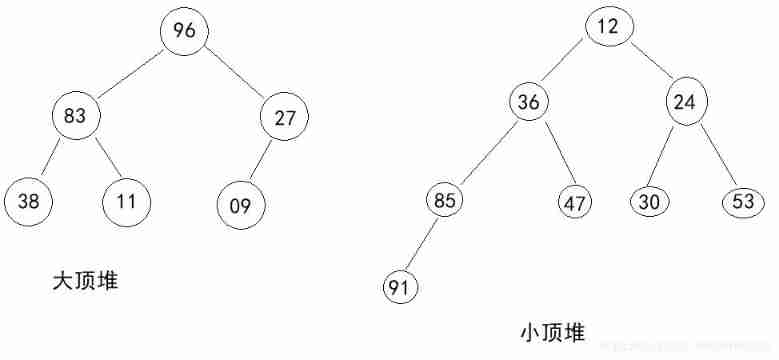
边栏推荐
- Use assimp library to read MTL file data
- Autocad-- dynamic zoom
- AutoCAD - set layer
- Research and investment forecast report of adamantane industry in China (2022 Edition)
- 2022/7/1學習總結
- Listview pull-down loading function
- UE 虚幻引擎,项目结构
- How much do you know about 3DMAX rendering skills and HDRI light sources? Dry goods sharing
- UE4/UE5 虚幻引擎,材质篇(三),不同距离的材质优化
- How to choose a panoramic camera that suits you?
猜你喜欢

嵌入式数据库开发编程(六)——C API
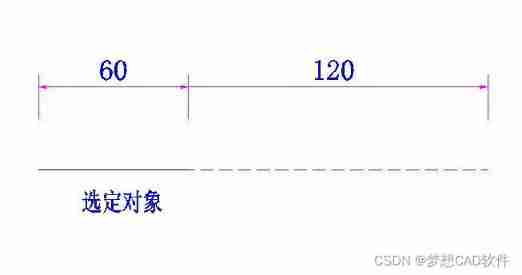
AutoCAD - lengthening
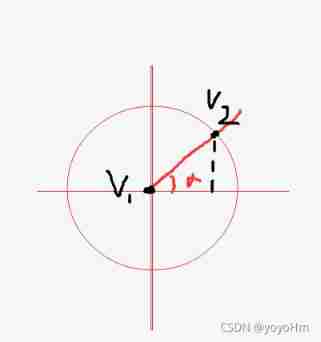
Unity find the coordinates of a point on the circle
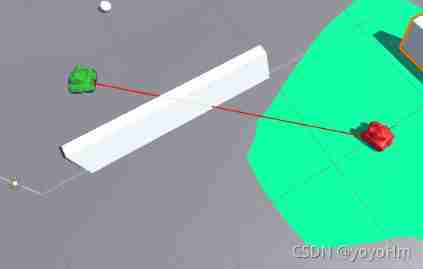
Unity check whether the two objects have obstacles by ray

UE 虚幻引擎,项目结构

小程序直播+電商,想做新零售電商就用它吧!
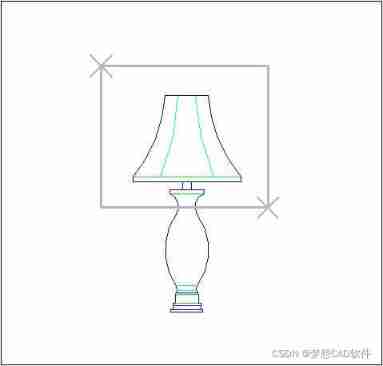
AutoCAD - window zoom

【Leetcode】1352. Product of the last K numbers
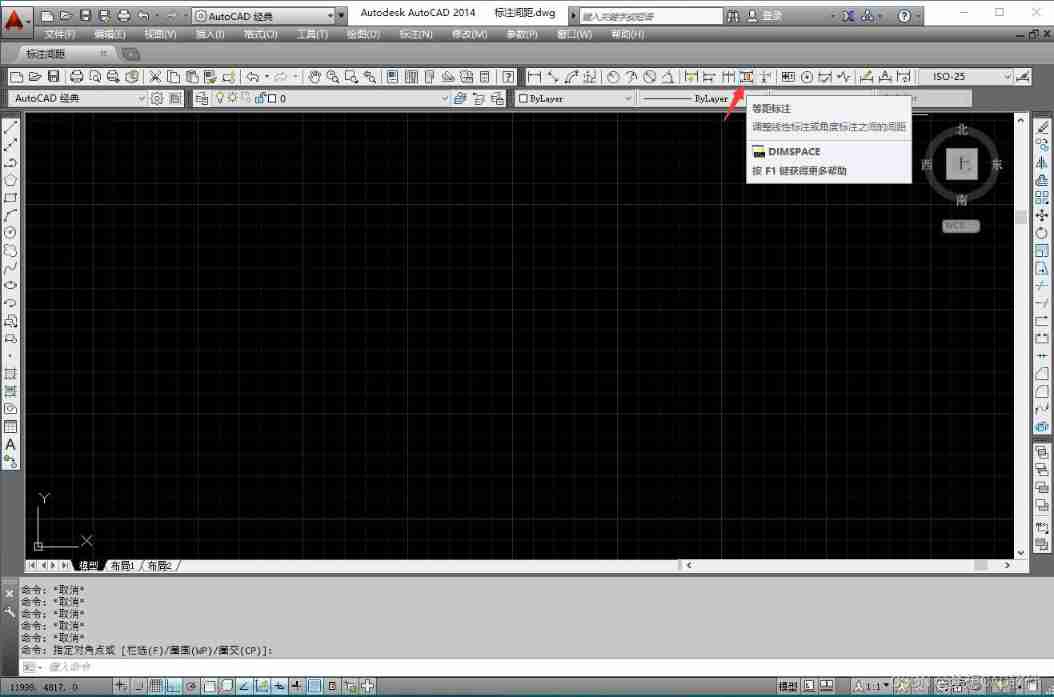
AutoCAD - isometric annotation

UE4/UE5 虚幻引擎,材质篇,纹理,Compression and Memory压缩和内存
随机推荐
Unity synergy
PostgreSQL 超越 MySQL,“世界上最好的编程语言”薪水偏低
Flink cluster configuration
LeetCode之单词搜索(回溯法求解)
MD5 bypass
Autocad-- Real Time zoom
Ue4/ue5 illusory engine, material chapter, texture, compression and memory compression and memory
Vs2015 secret key
《动手学深度学习》学习笔记
Download and use of font icons
Rip notes [rip three timers, the role of horizontal segmentation, rip automatic summary, and the role of network]
2022/7/1學習總結
2022 U.S. college students' mathematical modeling e problem ideas / 2022 U.S. game e problem analysis
Rip notes [rip message security authentication, increase of rip interface measurement]
3dsmax scanning function point connection drawing connection line
When will Wei Lai, who has been watched by public opinion, start to "build high-rise buildings" again?
GameObject class and transform class of unity
Three dimensional dice realize 3D cool rotation effect (with complete source code) (with animation code)
十年不用一次的JVM调用
2022/7/2 question summary